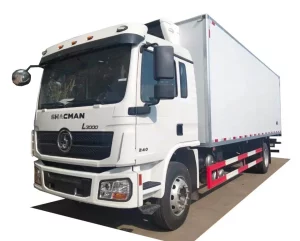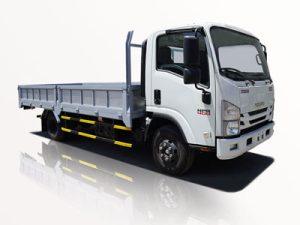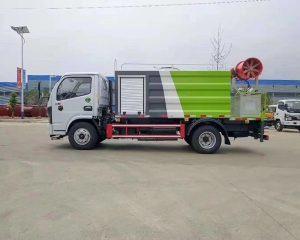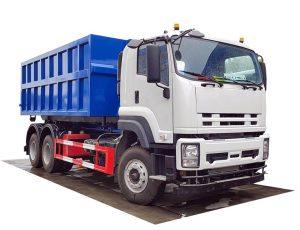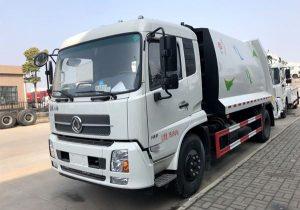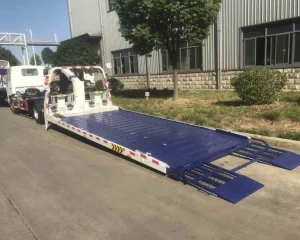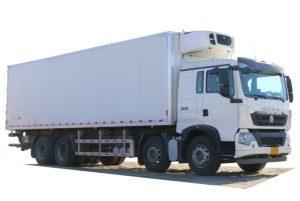Monday to Saturday - 8:00 -17:30
Understanding Trucks with Chassis: The Ultimate Guide
Trucks with chassis play a crucial role in various industries, from logistics to construction. In this comprehensive guide, we will delve into the specifics of chassis trucks, their types, uses, and considerations when choosing the right one for your needs. Whether you’re a business owner or simply interested in trucks, this article will provide valuable insights.
What Is a Truck with Chassis?
A truck with a chassis is a vehicle that consists of a separate framework which supports the body of the truck. The chassis is the foundational structure that holds various components such as the engine, transmission, wheels, and axles. This design allows for better customization and versatility in applications, making it ideal for many industries.
The Components of a Truck Chassis
1. Frame
The frame is the backbone of the truck, providing stability and strength. Frames are typically made from steel or aluminum for durability.
2. Suspension System
The suspension system helps absorb shocks from the road, providing a smoother ride. It can include springs, shock absorbers, and linkages.
3. Axles
Axles connect the wheels to the chassis and transfer power from the engine. They come in various configurations including single and dual setups.
4. Powertrain
The powertrain includes the engine, transmission, driveshafts, and differentials. It is essential for the truck’s performance and efficiency.
5. Steering Mechanism
The steering system allows the driver to control the truck’s direction. It is vital for maneuverability, especially in tight spaces.
6. Electrical System
The electrical system powers various components of the truck including lights, gauges, and infotainment systems.
Types of Trucks with Chassis
1. Flatbed Trucks
Flatbed trucks have a flat open bed, making them suitable for transporting large or heavy items. They are commonly used in construction and shipping.
2. Box Trucks
Box trucks, or cube vans, have an enclosed cargo area. They provide protection from weather elements, making them perfect for deliveries.
3. Dump Trucks
Dump trucks have a hydraulic bed that can be raised to unload materials. They are indispensable in construction and waste management.
4. Chassis Cab Trucks
Chassis cab trucks provide a frame with a cab but no cargo area. They are often customized with specialty bodies, such as tow trucks or emergency vehicles.
5. Refrigerated Trucks
Refrigerated trucks are designed to transport temperature-sensitive goods. They maintain a controlled environment and are critical for food and pharmaceuticals.
Common Uses of Trucks with Chassis
1. Logistics and Freight Transport
Chassis trucks are essential for transporting goods across short and long distances. They provide flexibility in handling cargo.
2. Construction
From dump trucks to crane trucks, chassis trucks are extensively used in construction projects to move materials and equipment.
3. Emergency Services
Chassis trucks are often customized for fire trucks, ambulances, and other emergency vehicles, making them vital for safety and response teams.
4. Landscaping and Maintenance
Landscaping companies utilize chassis trucks to haul tools and materials to various job sites efficiently.
5. Waste Management
Garbage trucks with specialized chassis designs are employed to collect and transport waste materials in urban areas.
Advantages of Using a Truck with Chassis
1. Customization
Chassis trucks can be tailored to various industry needs, making them incredibly versatile.
2. Durability
The robust design of chassis trucks ensures longevity and resilience against wear and tear.
3. Cost-Effectiveness
Investing in a chassis truck can be cost-effective in the long run, especially for businesses that have demanding transportation needs.
4. Enhanced Maneuverability
The structure of a chassis truck allows for better handling and control, especially in urban environments.
Factors to Consider When Choosing a Truck with Chassis
1. Load Capacity
Determine the weight and type of cargo you need to transport to select an appropriate chassis truck.
2. Engine Specifications
Evaluate the engine’s horsepower and torque to ensure it meets your operational needs.
3. Fuel Efficiency
Consider fuel economy, especially if the truck will be used frequently for long distances.
4. Vehicle Dimensions
Assess space requirements, including height, width, and length, to ensure the vehicle fits your operational needs.
5. Maintenance Costs
Look into the typical maintenance needs and costs associated with the chassis truck model you are considering.
Practical Tips for Operating a Truck with Chassis
1. Understand Load Distribution
Ensure that your load is adequately distributed across the truck’s frame to prevent damage and instability.
2. Regular Maintenance Checks
Schedule regular maintenance to ensure all components function properly, enhancing safety and longevity.
3. Invest in Quality Tires
Quality tires impact performance, fuel economy, and safety. Choose tires that fit your chassis specifications.
4. Train Your Drivers
Offering training for drivers on handling chassis trucks can reduce accidents and improve operational efficiency.
FAQ Section
1. What is the primary difference between a truck with a chassis and a conventional truck?
A truck with a chassis is designed with a separable framework that allows for customization, while standard trucks come with a fixed structure.
2. How do I know which chassis truck is right for my business?
Consider your specific cargo needs, load capacities, and operational requirements to select the appropriate chassis truck.
3. What is the average lifespan of a chassis truck?
With proper maintenance, a chassis truck can last anywhere from 10 to 20 years, depending on usage and type.
4. Are chassis trucks suitable for urban driving?
Yes, chassis trucks are designed for enhanced maneuverability, making them suitable for urban environments.
5. How often should I conduct maintenance on my truck with chassis?
It is advisable to perform routine maintenance checks every 5,000 to 10,000 miles, or at intervals recommended by the manufacturer.
6. Can I modify my truck with chassis after purchase?
Yes, one of the primary benefits of chassis trucks is their ability to be customized and modified according to specific operational needs.



